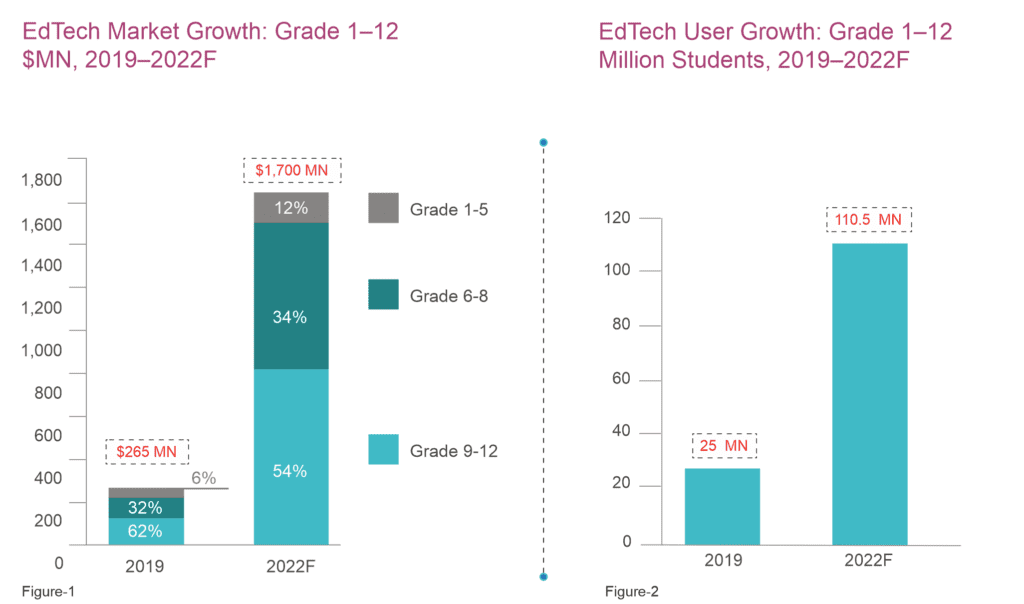The Indian EdTech industry is believed to have received a $16.1B in VC funding, a 32X increase from 500M received in 2010. The growth spurt in this industry is driven largely by K-12 Segment, higher education, and upskilling categories.
Coupled with the growing popularity of Massive Open Online Courses (MOOCs) and distant education India’s EdTech industry is poised to reach $30 billion in the next 10 years.
Governments, educational institutes, and teachers across the world innovated new approaches and techniques to help students learn and grasp concepts through digital learning. Granted that not all of their teaching strategies were successful, it proved one important fact – learning can happen beyond the classroom as well. Almost all private educational institutions in urban areas shifted to the online learning model to enable teacher-student interaction in real-time.

But government-aided and public educational institutions struggled quite a lot to offer such learning facilities to their students owing to limited resources and funding.
What’s necessary is for institutions to be in sync with the EdTech Readiness Framework (ERF), a key metric for tracking the growth boosters in the EdTech industry. For EdTech to bring a tangible disruption in K12 and post-K12 segments, it is crucial to align learning strategies with the four key tenets of ERF:
Digital adoption among families and individuals
- Awareness of EdTech
- Willingness to pay for EdTech solutions
- Funding in EdTech companies
India’s rapid and expansive Internet penetration, increasing awareness of EdTech and digital technologies among the general populace, and a massive untapped market creates a promising outlook for EdTech players.
As per the latest stats, over 4,450 EdTech startups have been launched in India between January 2014 and September 2019. By 2025, it is estimated that EdTech products & services will have more than 37 million paid users.
Furthermore, according to Redseer’s Edtech Report, by 2022, online education solutions for K12 will likely increase 6.3 times, becoming a US$ 1.7 billion market. As for the post-K12 market, it will expand by 3.7 times to reach a market size of US$ 1.8 billion.
These stats only reinstate that India’s EdTech market is rife with opportunities to transform and disrupt the traditional education landscape.
What needs to be done?
Education delivery and unemployment are two major challenges India faces. Although the primary and secondary school network has expanded considerably over the past decade, the enrolment ratio is not very impressive.
As of 2019, India’s Gross Enrolment Ratio in higher education stood at 26.3%, indicating that there’s still a long way to go. Infrastructure is one of the biggest obstacles in the delivery of quality education to students throughout India, particularly in remote and rural areas.
More:













